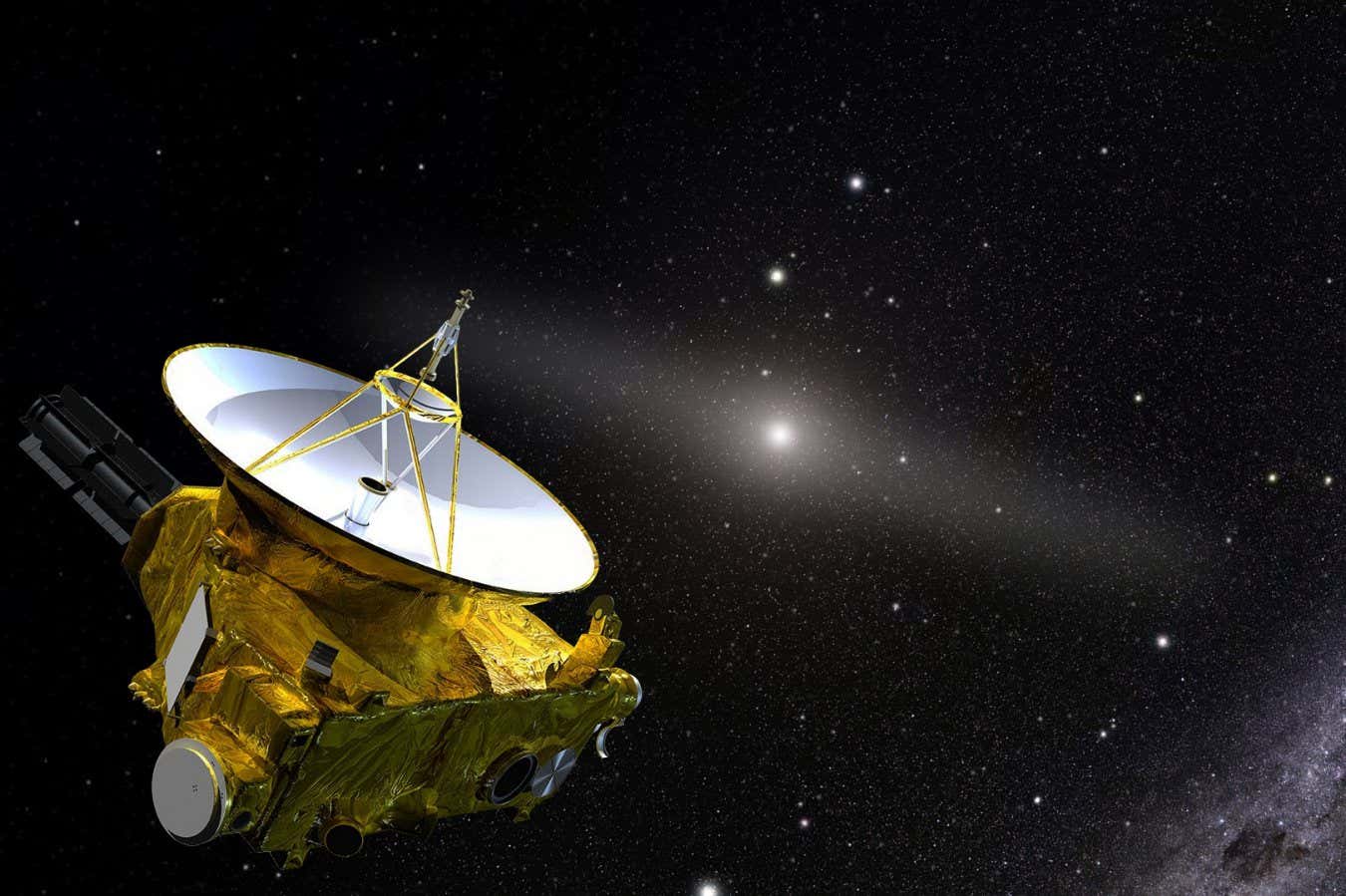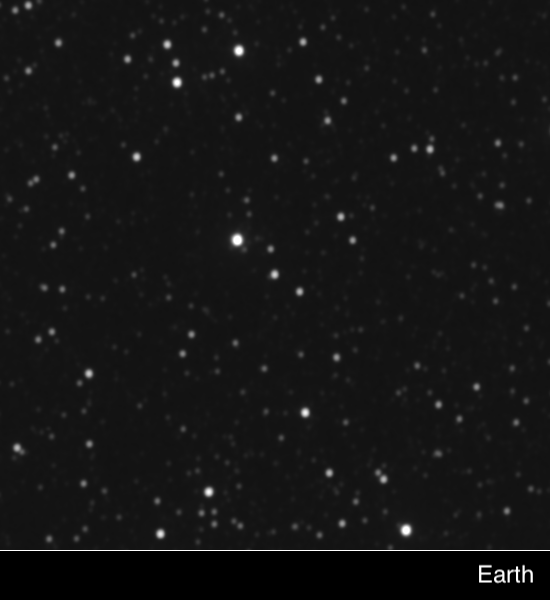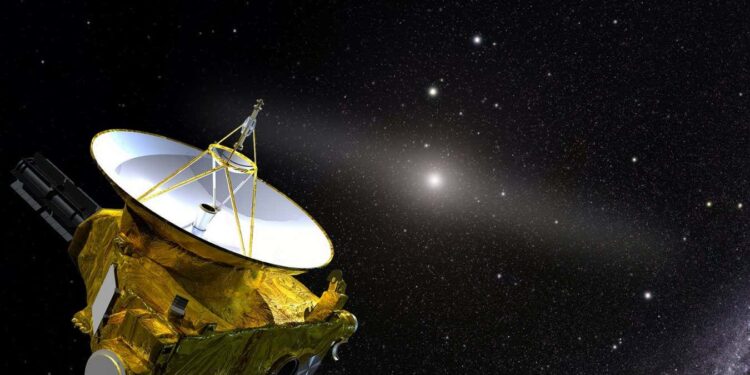
Artist’s illustration of NASA’s New Horizons spacecraft in the outer solar system
Joe Olmsted/STScI
As it hurtles out of our solar system, NASA’s New Horizons spacecraft is so far from Earth that the stars in the Milky Way appear in markedly different positions compared with our own view. Astronomers have now used this change in perspective to work out the probe’s position in the galaxy, in the first ever example of interstellar navigation.
New Horizons was launched in 2006, initially to study Pluto, but it has since travelled way beyond this point, ploughing on through the Kuiper belt, a vast, wide band of rocks and dust billions of miles from the sun. It is now speeding at tens of thousands of kilometres per hour.
When gazing at the night sky from Earth, the stars are so far away that they don’t appear to change positions when viewed from different locations, unless you have a powerful telescope. But from New Horizons’ viewpoint, there is a significant change in star positions due to the parallax effect. This was demonstrated in 2020 when the probe beamed back pictures of two nearby stars, Proxima Centauri and Wolf 359, to Earth.
Now, Tod Lauer at the US National Optical-Infrared Astronomy Research Laboratory in Arizona and his colleagues have used this effect to work out the position of New Horizons. They did it by comparing the probe’s photos of Proxima Centauri and Wolf 359 with measurements from the Gaia space telescope, which has produced the most detailed map of stars in our Milky Way.
“We have a good enough three-dimensional map of the galaxy around us that you can find out where you are,” says Lauer. “It’s a remarkable accuracy, with your own camera [on board a spacecraft].”
To calculate the spacecraft’s position, he and his team looked at the position of the stars as they appeared from New Horizons’ on-board camera, drawing a line of sight back from both stars and working out where the two lines were closest. Then, they used the precise position of both stars from Gaia’s star map to work out where this point was in relation to the solar system.

This two-frame animation shows the shifting position of Proxima Centauri as viewed from Earth and New Horizons
Almost all spacecraft calculate their bearings to within tens of metres using NASA’s Deep Space Network (DSN), a collection of radio transmitters on Earth that send regular signals out to space. In comparison, the parallax method was far less accurate, locating New Horizons within a sphere with a radius of 60 million kilometres, about half the distance between Earth and the sun.
“We’re not going to put the Deep Space Network out of business – this is only a demo proof of concept,” says Lauer. However, with a better camera and equipment they could improve the accuracy by up to 100 times, he says.
Using this technique for interstellar navigation could offer advantages over the DSN because it could give more accurate location readings as a spacecraft gets further away from Earth, as well as being able to operate autonomously without needing to wait for a radio signal to come from our solar system, says Massimiliano Vasile at the University of Strathclyde, UK.
“If you travel to an actual star, we are talking about light years,” says Vasile. “What happens is that your signal from the Deep Space Network has to travel all the way there and then all the way back, and it’s travelling at the speed of light, so it takes years.”
However, there are no missions in the works to go deep into interstellar space by any agency, says Vasile, so the utility of this particular technique is limited until one takes shape, he says.
Topics:
Source link : https://www.newscientist.com/article/2486823-new-horizons-images-enable-first-test-of-interstellar-navigation/?utm_campaign=RSS%7CNSNS&utm_source=NSNS&utm_medium=RSS&utm_content=home
Author :
Publish date : 2025-07-02 16:12:00
Copyright for syndicated content belongs to the linked Source.














